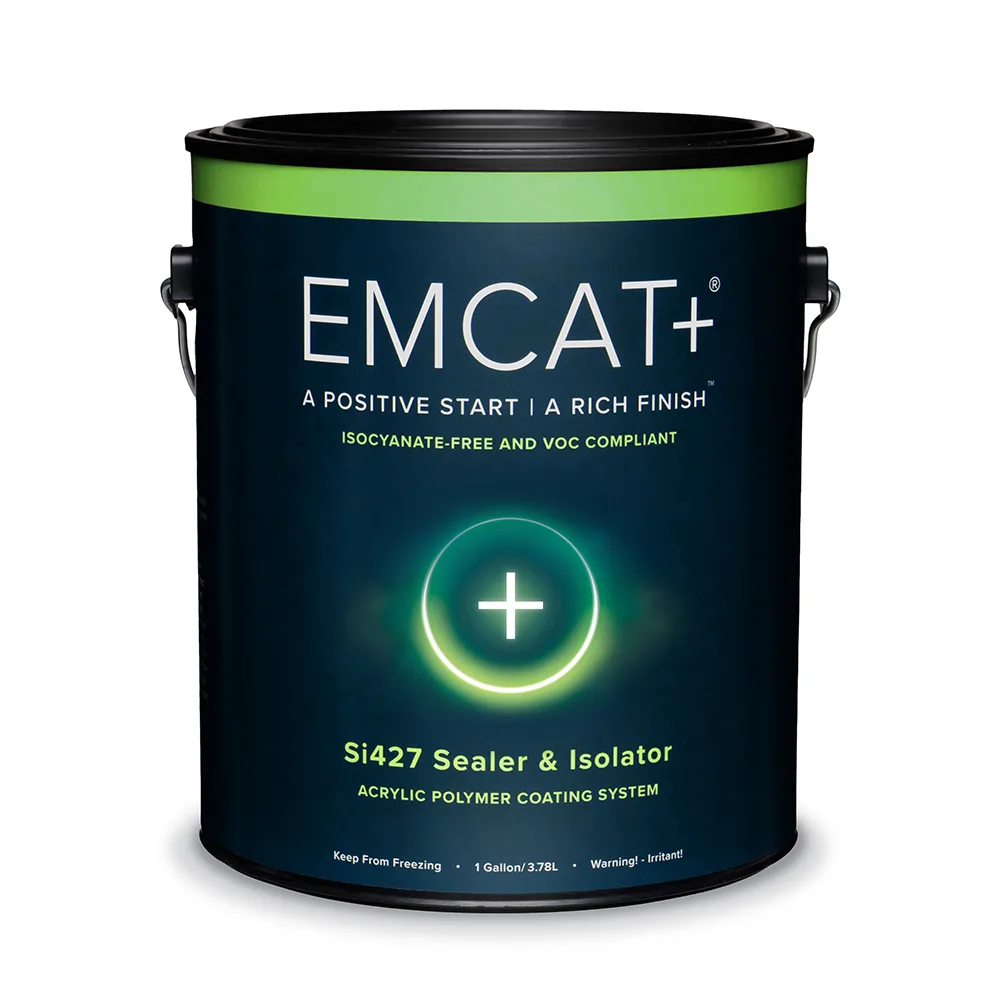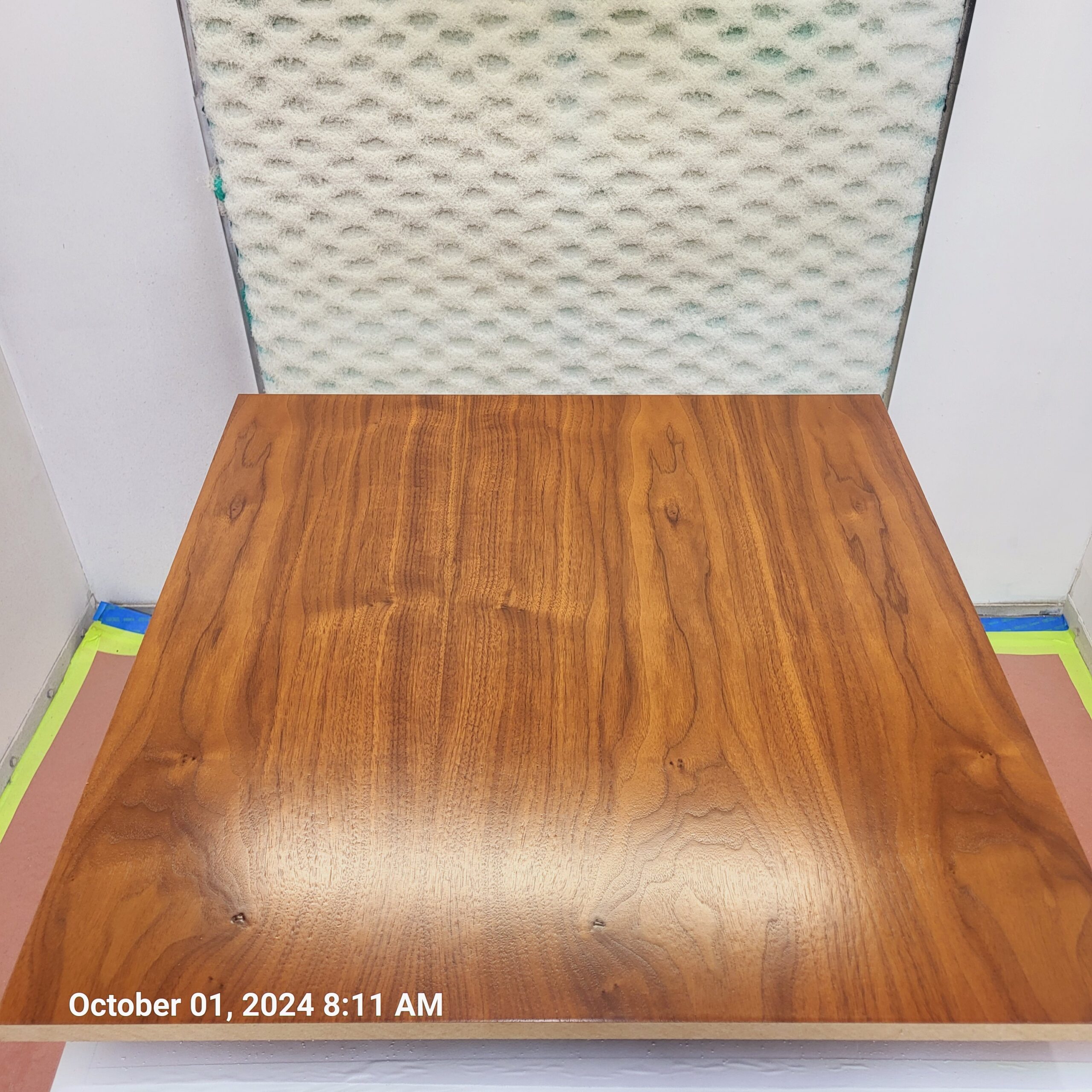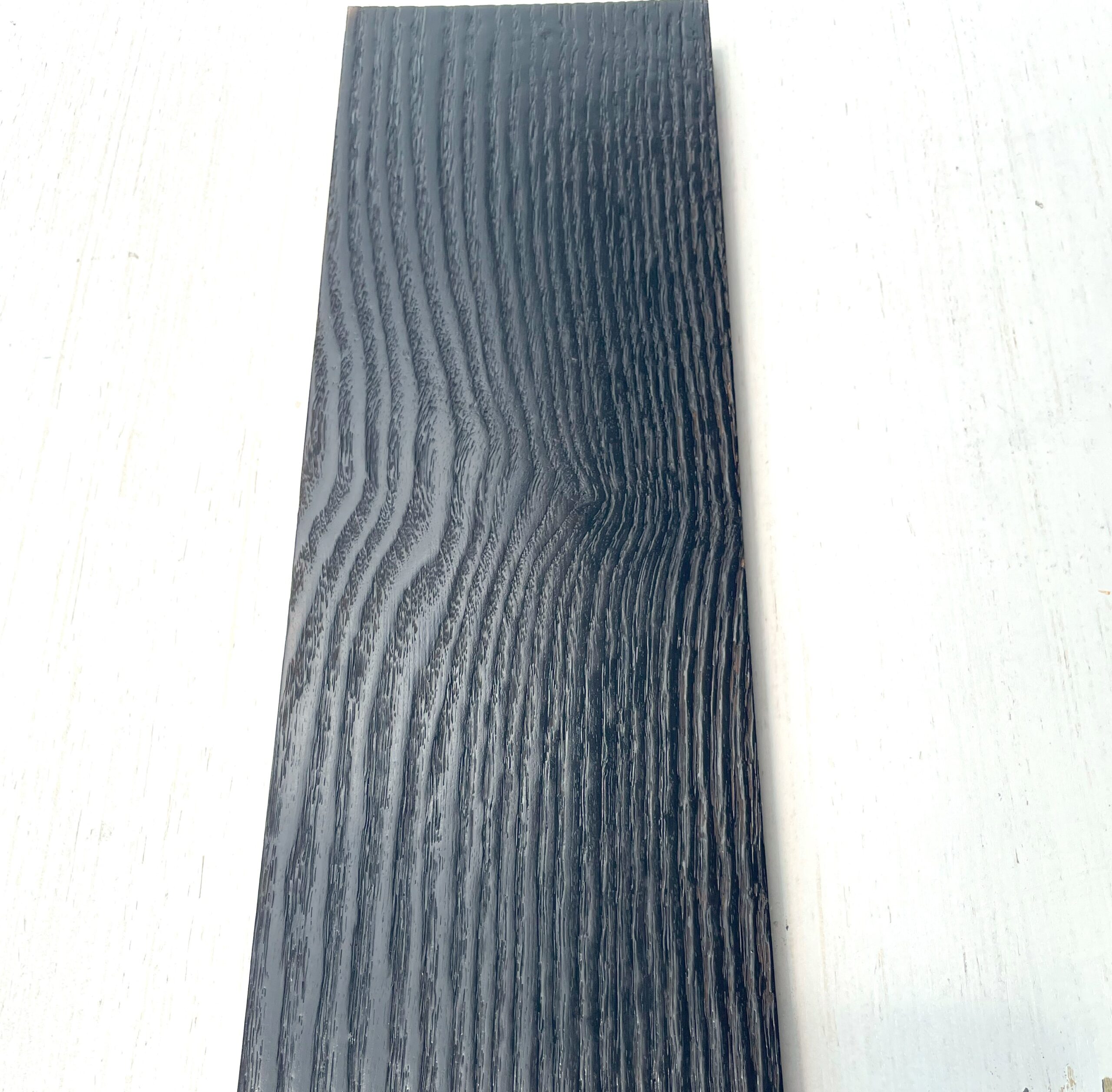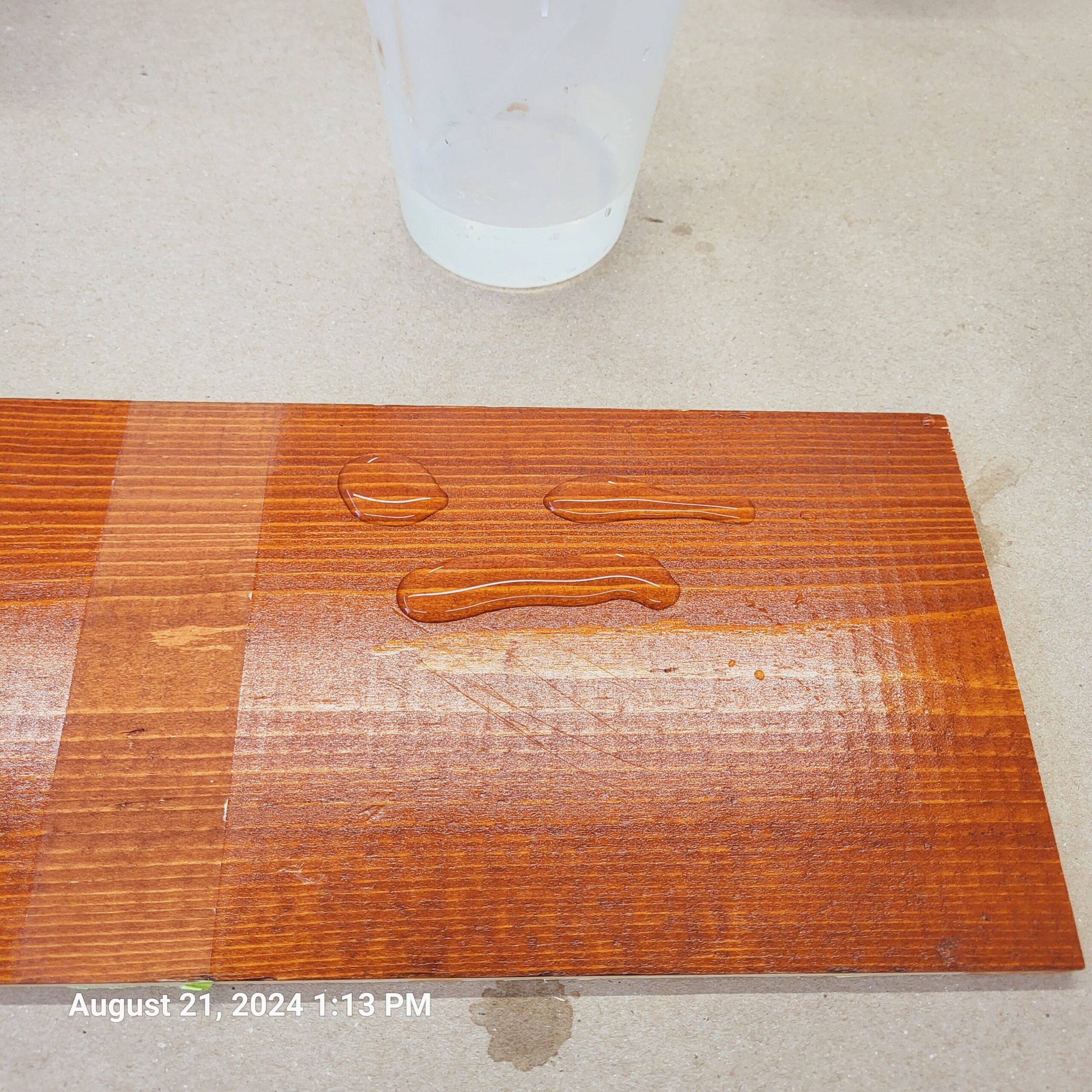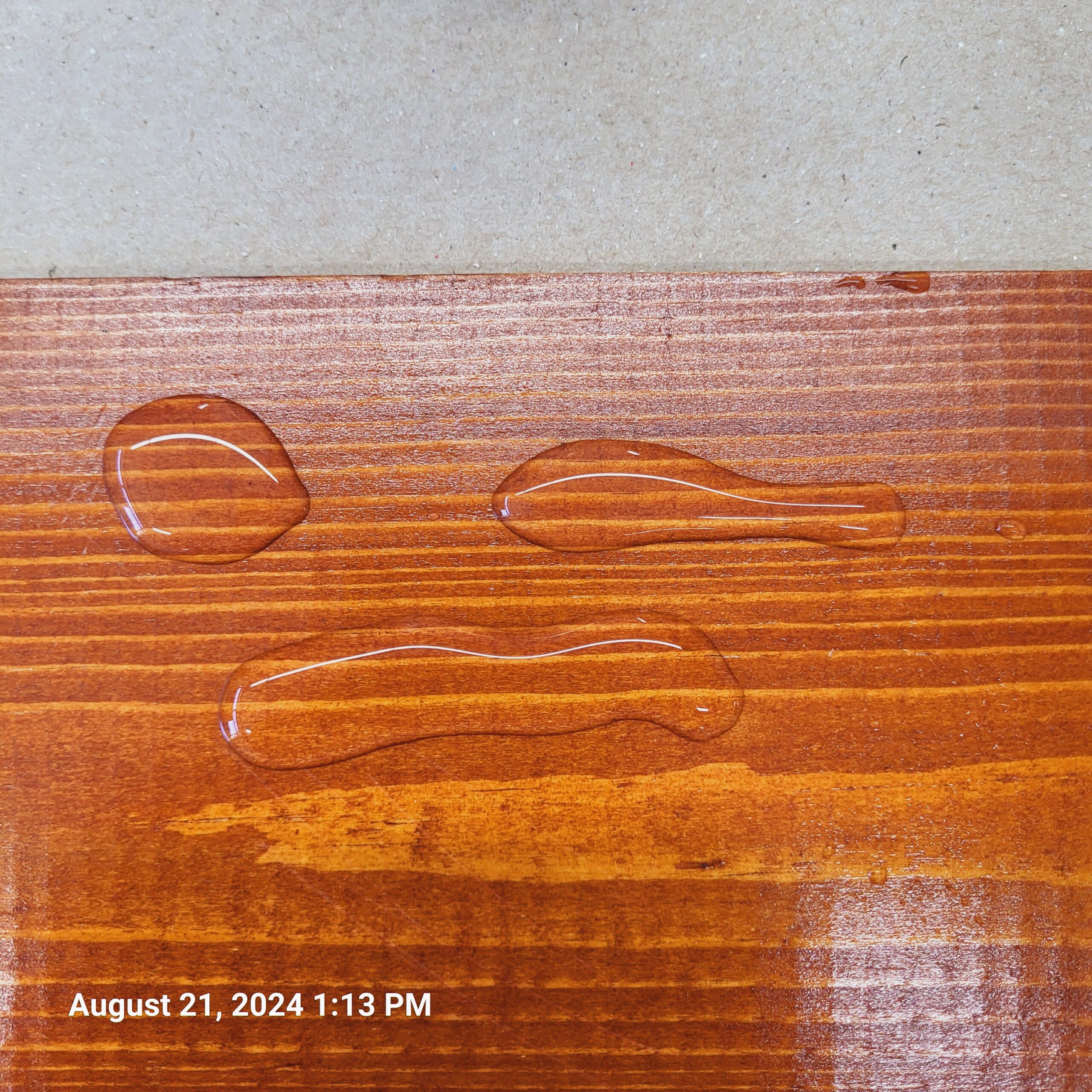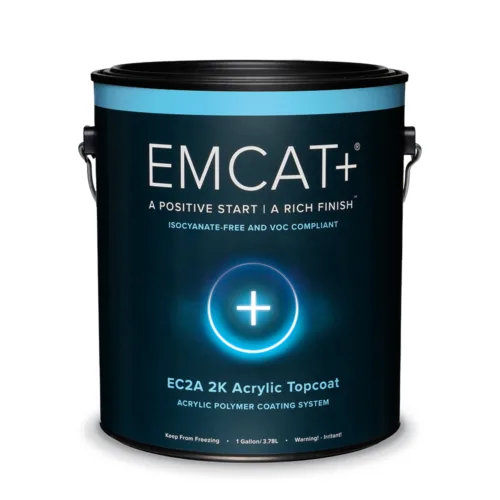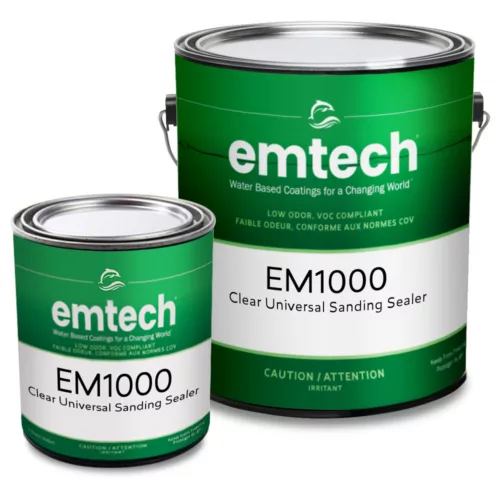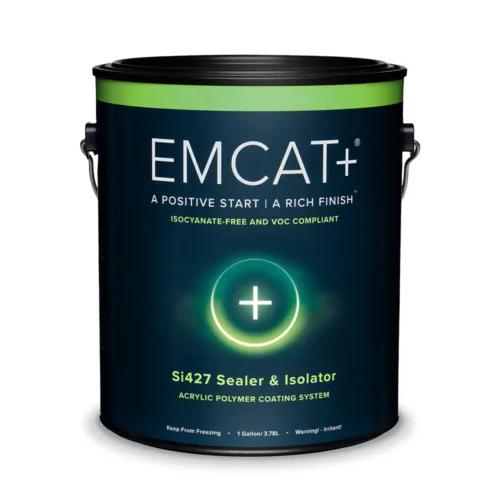EMCAT+® Si427 is a Low VOC and HAPs Free acid functional, water based acrylic polymer coating specifically formulated as a Single-Component Sealer and Isolator. Designed to be used in tandem with Emcat+® EC2A Topcoat for custom residential and commercial applications, or underneath our Emtech® Waterborne clear coats. Si427 utilizes advanced resins to provide a unique, self-leveling sealer or barrier coat over difficult to cover substrates and pre-existing or prior applied coatings.
Key Features
- Perfect partner for Emcat+® EC2A Topcoat and Emtech® Waterborne clear coats
- Self-leveling formula for easy applications
- Bonds to a wide range of surfaces, including: all types of wood (oily, exotic hardwoods, veneers, engineered products), stainless steel, stone, plastics, and fiberglass
- Can be applied over select fire retardant coatings*
- 1K ease. No catalyst required.
EMCAT+® Si427 features a unique ionic charge that allows it to bond to a wide variety of properly prepared substrates including all types of wood surfaces (oily, exotic hardwoods, veneers, engineered wood products, etc.), and a wide variety of natural and synthetic surfaces such as stainless steel, stone, plastics, and fiberglass. Si427 can be used as a Sealer/Isolator over select fire retardant coatings* – allowing the use of Emtech® clear or pigmented topcoats for FR rated substrates without the concern of haze or chemical blush in the topcoat.
EMCAT+® Si427 is self-crosslinking at ambient temperatures ranging from 65°F and above and can be used as a direct replacement for flammable or highly toxic single and twocomponent pre and post catalyzed vinyl and urethane sealers. This feature gives great latitude of use and application for the finishing professional when working in a wide range of environments.
*For specific fire retardant coating compatibility, please consult product documentation.
Directions for Use
Data Sheets
EMCAT+ Si427 Sealer & Isolator Downloads: TDS | SDS
Directions for Use
- All surfaces to be finished must be clean and free of oil, dust, and contamination that may cause fisheyes or poor adhesion.
- Clean surfaces with denatured alcohol or clean water to remove contamination. Allow the surface to thoroughly dry before proceeding. DO NOT use High pH Cleaning Solutions.
- Fine sand surface to be finished with 180G to 400G sandpaper based on the type of final finish required.
- If the surface to be finished has a grain-filling type glaze, sealer or paste, please ensure that the systems are compatible with one another by preparing a test panel before proceeding. Certain solvent-based fillers and glazes may prevent proper adhesion of the sealer if not thoroughly dry before application of Si427. Ensure that grain fillers have been sanded with a minimum of 400G sandpaper and all contamination is removed. Oil based glazes should be air dried and tested to ensure proper adhesion.
- Spray apply each coat of Si427 Acrylic Sealer with HVLP, Conventional, Airless or Airless/Air-assist spray equipment. Consult with your spray gun manufacturer for proper gun setup based on coating viscosity and intended use.
- Optimum application conditions are when the ambient room temperature is between 65° – 75° F. We recommend that application and drying temperatures do not fall below 60°F. The use of an external heat source is recommended during applications below 60F. Infrared, IR or other heat sources are acceptable.
- DO NOT mix Emtech products and Emcat+ products while in liquid form to prevent cross contamination. It is imperative that all equipment used be thoroughly cleaned before moving from an Emtech product to an Emcat+ product or vice versa.
- We highly recommend the use of nitrile gloves, a NIOSHA approved respirator, and safety glasses during the application and cleanup of this material. Consult the Safety Data Sheet of this material for additional safety and health procedures.
Application Instruction
- After surfaces to be coated have been properly prepared, remove any final sanding dust and/or contamination with a cloth dampened with a water and alcohol solution mixed 1:1.
- Mix Si427 well before using. DO NOT SHAKE. Allow air to settle before using.
- Si427 can be sprayed without reducing with water. However, additions of distilled water might be required if the coating is drying too quickly in high temperature/low humidity environments. SA5 Retarder can also be used to slow down dry times. We recommend a 5-10% reduction as a starting point.
- Apply the required number of coats of Si427 to obtain the desired film build. When used as a barrier coat, 1 coat at 2-3 mil wet film should be sufficient. When used as a sealer in combination with EC2A Topcoat, we recommend a minimum of 2 coats applied at 2-3 mil wet film. There is no limit to the total number of coats of Si427 that can be applied.
- Allow each coat to dry for a minimum of 45-60 minutes at ambient room temperatures at or above 70°F. Faster recoat times can be achieved with temperatures above 70°F or with forced air drying as high as 130°F.
- Sand with 400G sandpaper, if the previous coat has dried for more than 24 hours, or if required to remove surface imperfections like dust nibs, runs, or sags. Otherwise, sanding is not required between coats.
- Before application of additional coats, remove sanding dust with a dry clean cloth. Remove any potential surface contamination with a solution of 1:1 water and denatured alcohol.
- Allow Si427 to dry a minimum of 8 hours before application of EC2A Topcoat. Allow Si427 to dry a minimum of 24 hours before application of an Emtech clear topcoat.
Clean-Up Procedures
- All Target Coatings EMCAT+® Series coatings can be cleaned up with fresh, warm water and, when necessary, alcohol. Thoroughly clean all spray gun equipment with warm water, followed by a solution of water and denatured alcohol after each use.
- DO NOT USE HIGH pH ALKALINE DETERGENT when cleaning Emcat+ Series coatings.
- Thoroughly flush the drain system with water after cleaning.
- If the finish dries to a hard film, soak gun parts and equipment in acetone or denatured alcohol to soften hardened film.
Average Equipment Use Settings
Conventional Equipment Pressure Pot: If needed, reduce with deionized water up to 10% maximum. Nozzle size: 1.4mm to 1.6mm. Atomizing air: 30 psi–40 psi, Pot pressure 4psi to 8psi. Consult with spray gun manufacturers for optimal pressure settings based on coating viscosity.
HVLP Equipment: If needed, reduce with deionized water up to 10% maximum. Nozzle size: 1.4mm to 1.7mm. Atomizing air: 20 psi – 30 psi. Consult with spray gun manufacturers for optimal pressure settings based on coating viscosity.
Airless Air Assist Equipment (10:1 Pump Ratio): If needed, reduce with dionized water up to 10%lv maximum. The recommended Tip set sise .09 to .11 is suggested. Fluid psi is sugested to be 200psi to 300psi, and atomizing air 20psi to s5psi depending on the orientation of the surface being finished and the required wet film thickness required.
Industrial Hygiene Requirements
WARNING: This product is rated as an IRRITANT! Use only in well ventilated areas. Avoid inhaling spray mist. Wear a NIOSH/MSHA approved respirator during spray applications. Use nitrile gloves when handling. Wear safety glasses at all times.
Emergency First-Aid
Ingestion:
Administer large amounts of water.
DO NOT induce vomiting.
Seek immediate medical attention.
Inhalation:
Remove exposed person(s) to a well ventilated area. Treat symptomatically.
Eyes:
Flush with fresh water. Seek medical attention.
Skin:
Wash the exposed area with warm, soapy water. Seek medical attention if irritation occurs.
Disclaimer
The information and suggestions are, to the best of our knowledge, reliable. Since the conditions of use are beyond our control, this company cannot assume responsibility for any risk or liabilities that may result from the use of its products.

